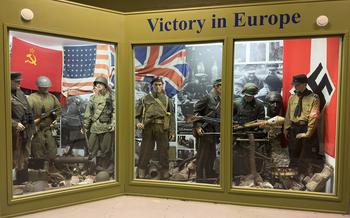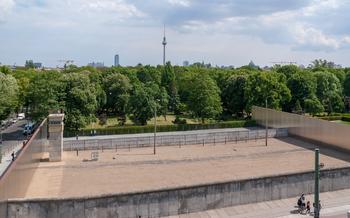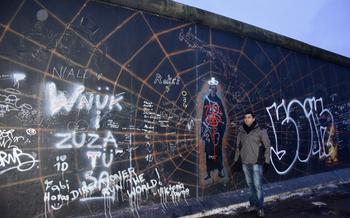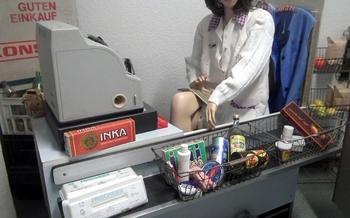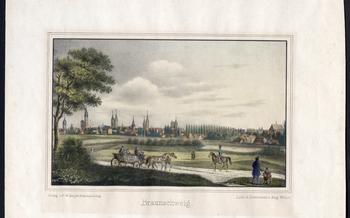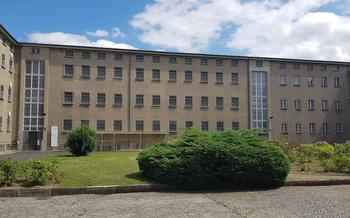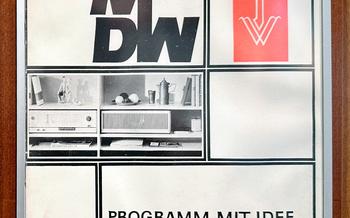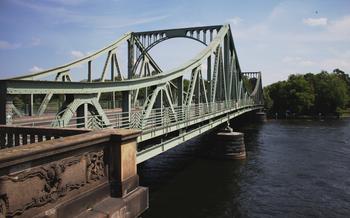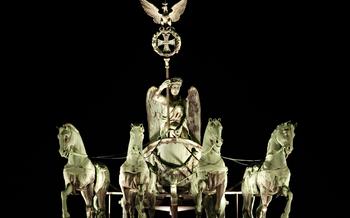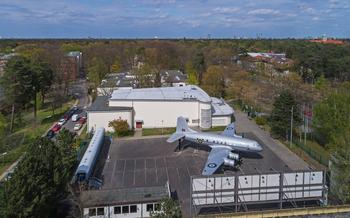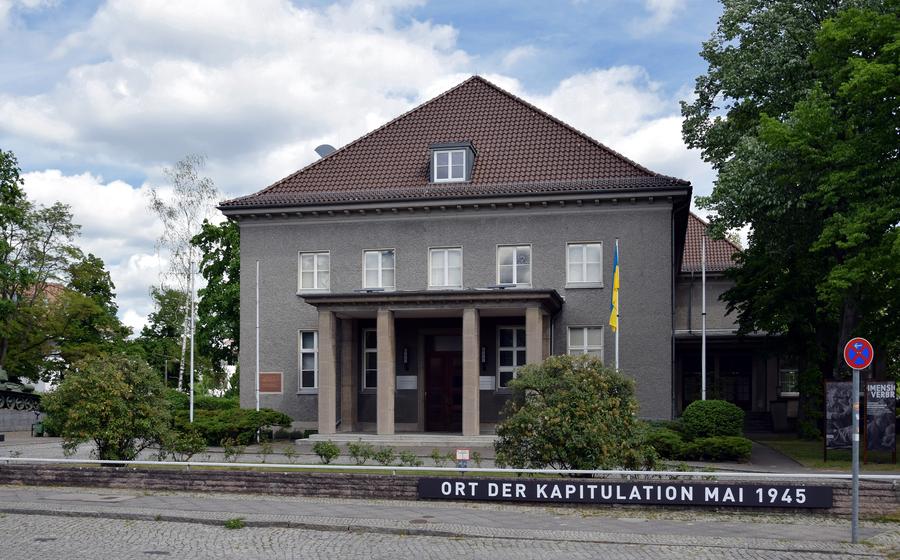
The Karlshorst Museum
- A Journey Through History
- World War II and Its Aftermath
- Soviet Occupation and the Cold War
- Unification and Beyond
- Interactive Exhibits and Multimedia Displays
- The Museum's Architecture
- Highlights of the Museum Collection
- Guided Tours and Educational Programs
- Accessibility and Visitor Information
- Nearby Attractions and Points of Interest
- Historical Significance and Context
- Controversies and Debates
- Personal Stories and Anecdotes
- Research and Academic Collaboration
- Insider Tip:
A Journey Through History
The Karlshorst Museum stands as a testament to the tumultuous history of Germany, particularly the events of World War II and the subsequent Soviet occupation. Situated in the former Soviet military complex in the Karlshorst district of Berlin, the museum's location itself holds profound significance. Here, in the heart of what was once East Germany, visitors embark on a journey through the nation's past, exploring the key events and exhibitions that have shaped the museum's narrative.
The museum's history is deeply intertwined with the changing political landscape of Germany. Founded in 1967 as the Museum for German-Soviet Friendship, its original focus was on promoting understanding and cooperation between the two nations. However, following German reunification in 1990, the museum underwent a significant transformation, expanding its scope to encompass a broader perspective on German history, particularly the impact of World War II and the Soviet occupation.
Over the years, the Karlshorst Museum has hosted numerous exhibitions that have shed light on pivotal moments in Germany's past. These exhibitions have covered topics such as the rise of National Socialism, the experiences of ordinary citizens during the war, and the challenges of post-war reconstruction. Through these exhibitions, the museum has sought to provide a comprehensive understanding of the complexities of Germany's recent history.
World War II and Its Aftermath
The Karlshorst Museum's primary focus is on World War II and its profound impact on Germany. Through a series of compelling exhibits, the museum sheds light on the devastating consequences of the war, particularly for the German people. Visitors can explore displays that showcase the destruction of cities, the loss of life, and the hardships faced by civilians during this tumultuous period. The museum also presents personal stories of individuals who lived through the war, offering a poignant and intimate perspective on the human toll of the conflict. These exhibits serve as a powerful reminder of the horrors of war and the importance of fostering peace and reconciliation.
Soviet Occupation and the Cold War
The Karlshorst Museum delves into the intricate history of the Soviet occupation of East Germany and the profound impact of the Cold War on Berlin and Germany as a whole. Through captivating exhibits, visitors gain a comprehensive understanding of life under communist rule, the challenges faced by the divided nation, and the far-reaching consequences of the ideological struggle that shaped the global landscape.
The museum showcases poignant stories of individuals who lived through this tumultuous period, shedding light on their struggles, hopes, and resilience. It highlights the complexities of living in a society divided by political ideologies, where daily life was influenced by the omnipresent threat of nuclear conflict.
Exhibits explore the establishment of the German Democratic Republic (GDR) in 1949, the construction of the Berlin Wall in 1961, and the subsequent decades of division. Visitors learn about the Stasi, the GDR's secret police, and its pervasive surveillance and repression of dissent. The museum also examines the impact of the Cold War on Berlin, a city that became a focal point of the ideological struggle between East and West.
Unification and Beyond
The Karlshorst Museum delves into the pivotal chapter of German reunification in 1990, a transformative event that dramatically reshaped the nation's political, social, and economic landscape. Through thought-provoking exhibits, the museum sheds light on the intricate challenges and remarkable successes that Germany faced during this period of transition.
Exhibits showcase the euphoria and uncertainty that accompanied the fall of the Berlin Wall, as well as the complex process of integrating East and West Germany into a unified nation. Visitors can trace the steps taken to establish a new democratic government, rebuild infrastructure, and create a cohesive society from two distinct systems.
The museum also highlights Germany's growing role in the European Union and its contributions to the modern world. It explores how Germany has emerged as a leader in promoting peace, democracy, and economic cooperation within the EU and beyond, forging strong partnerships and playing a vital role in shaping the global landscape.
Interactive Exhibits and Multimedia Displays
The Karlshorst Museum brings history to life through a range of interactive exhibits and multimedia displays. Visitors can engage with touchscreens, listen to audio recordings, and watch videos that provide additional context and information. These interactive elements enhance the museum experience, making it more immersive and accessible to visitors of all ages.
One of the most popular interactive exhibits is a virtual reality experience that allows visitors to step back in time and witness key moments from World War II and the Cold War. This immersive experience transports visitors to the streets of Berlin during the air raids, or to the negotiating table during the Potsdam Conference.
Another highlight is the multimedia display that showcases the history of the Soviet occupation of East Germany. Visitors can explore interactive maps, view historical photographs, and listen to personal accounts from individuals who lived under communist rule. This exhibit provides a deeper understanding of the impact of the Cold War on the lives of ordinary people.
The Karlshorst Museum's interactive exhibits and multimedia displays are designed to engage visitors and provide a deeper learning experience. These innovative features make the museum a must-visit destination for anyone interested in exploring German history in a dynamic and engaging way.
The Museum's Architecture
The Karlshorst Museum stands out for its unique architectural design, which seamlessly blends historical elements with a modern structure. The museum building was once a Soviet military headquarters, and its original features have been carefully preserved and integrated into the new design. Visitors can still see the watchtowers, barbed wire fences, and other remnants of the former military complex. This juxtaposition of old and new creates a powerful visual reminder of the site's complex history.
The museum's modern wing, designed by renowned architect Axel Schultes, is characterized by its sleek lines and minimalist aesthetic. The use of glass and concrete allows for an abundance of natural light, creating a bright and airy atmosphere inside the museum. The interplay between the historical and contemporary elements of the architecture adds depth and significance to the museum's exhibits, inviting visitors to explore the past and present in a thought-provoking way.
Highlights of the Museum Collection
The Karlshorst Museum boasts a comprehensive collection of artifacts, documents, and multimedia displays that offer a profound insight into Germany's turbulent history. Among the highlights are the iconic T-34 tank, a symbol of the Soviet Union's military might during World War II. Visitors can also explore a replica of a Soviet military courtroom, where show trials were held during the occupation.
The museum's collection also features personal items and documents that tell the stories of individuals who lived through the war and its aftermath. Letters, diaries, and photographs provide a glimpse into the daily lives of ordinary people caught in extraordinary circumstances. The museum also showcases propaganda posters, uniforms, and other artifacts that illustrate the ideological battles of the Cold War era.
One of the most poignant exhibits is the "Memory Book," which contains the names of over 100,000 Soviet soldiers who died during the Battle of Berlin. Visitors can flip through the pages of this somber volume and reflect on the human cost of war. The Karlshorst Museum's collection stands as a testament to the resilience of the German people and the profound impact of historical events on their lives. Through these artifacts and displays, the museum preserves and showcases the complexities of Germany's past, offering visitors a deeper understanding of the nation's journey from division to reunification.
Guided Tours and Educational Programs
The Karlshorst Museum offers guided tours in various languages, allowing visitors to explore the museum's exhibits with the assistance of a knowledgeable guide. These tours provide in-depth insights into the history and significance of the museum's collection, offering a deeper understanding of the events and individuals featured in the exhibits.
In addition to guided tours, the museum also offers educational programs and workshops tailored to students, groups, and individuals with specific interests. These programs delve into specific topics and periods of history, providing a more comprehensive learning experience. The museum's educational team is dedicated to creating engaging and interactive programs that cater to different age groups and interests.
To book a guided tour or arrange a group visit, it is advisable to contact the museum in advance to ensure availability and to customize the tour according to your preferences. The museum staff is friendly and helpful, providing assistance with bookings and answering any questions you may have.
Accessibility and Visitor Information
The Karlshorst Museum is committed to providing an accessible and welcoming environment for all visitors. The museum offers a range of accessibility features, including ramps, elevators, and accessible restrooms. The museum also provides wheelchairs for visitors who need them.
The museum is open from Tuesday to Sunday, 10am to 6pm. Admission fees are €8 for adults, €4 for children and students, and free for children under The museum offers guided tours in English and German, which can be booked in advance.
To plan your visit to the Karlshorst Museum, it is recommended to check the museum's website for the most up-to-date information on hours of operation, admission fees, and guided tours. The museum's website also provides a map and directions to the museum.
When visiting the museum, it is helpful to wear comfortable shoes, as there is a lot of walking involved. It is also a good idea to bring a camera to capture the many exhibits and artifacts on display.
Nearby Attractions and Points of Interest
In addition to the Karlshorst Museum, the area is home to several other notable attractions. The nearby Dokumentationszentrum NS-Zwangsarbeit (Documentation Center Nazi Forced Labor) sheds light on the dark history of forced labor during the Nazi regime. For a glimpse into East German history, visit the Stasi Museum, housed in the former headquarters of the notorious secret police.
For a break from history, escape to the tranquil surroundings of the Tierpark Berlin, a zoological garden featuring over 7,000 animals from around the world. Take a stroll through the picturesque Schlosspark Karlshorst, a sprawling park with a beautiful palace at its heart.
To immerse yourself in Berlin's vibrant arts scene, head to the nearby Kulturfabrik, a former factory transformed into a cultural hub, hosting exhibitions, performances, and events. For a taste of local flavors, indulge in delicious international cuisine at the many restaurants and cafes lining the streets of Karlshorst.
Combining a visit to the Karlshorst Museum with these nearby attractions offers a comprehensive and enriching experience, providing a deeper understanding of German history, culture, and contemporary life.
Historical Significance and Context
The Karlshorst Museum stands as a crucial institution in preserving and interpreting German history. Its exhibits offer a profound exploration of the nation's past, shedding light on pivotal moments that shaped its trajectory. Through its displays, the museum encourages visitors to confront the complexities of German history, delve into the causes and consequences of significant events, and gain a deeper understanding of the forces that have influenced the country's development.
The museum's exhibits provide a comprehensive narrative of Germany's journey, from the horrors of World War II and the division of the country during the Cold War to the eventual reunification and its current position as a leading member of the European Union. By contextualizing these events within the broader sweep of history, the museum helps visitors appreciate the profound impact of the past on contemporary Germany.
Understanding the events depicted in the Karlshorst Museum's exhibits is crucial for comprehending the nation's present. Germany's history, marked by periods of both triumph and tragedy, has indelibly shaped its identity, culture, and political landscape. By delving into this rich tapestry of the past, visitors gain insights into the roots of modern Germany, its challenges, and its aspirations.
The Karlshorst Museum serves as a gateway to understanding Germany's journey through the 20th century, a period that witnessed some of the most tumultuous events in human history. Through its exhibits, the museum contributes to a broader understanding of this pivotal era, offering visitors a chance to reflect on the lessons of the past and appreciate the significance of history in shaping the present.
Controversies and Debates
The Karlshorst Museum, with its focus on sensitive topics such as World War II, the Soviet occupation, and the Cold War, has inevitably been the subject of controversies and debates. Some critics have argued that the museum's exhibits present a biased or incomplete perspective, while others have questioned the accuracy or interpretation of certain historical events.
One of the most contentious issues relates to the depiction of the Soviet Union's role in post-war Germany. Some critics have accused the museum of being too critical of the Soviet Union, while others have argued that it does not adequately address the negative aspects of Soviet rule.
Another point of debate concerns the museum's handling of individual figures, such as Erich Honecker, the former leader of East Germany. Some critics have argued that the museum presents too sympathetic a portrayal of Honecker, while others have accused it of demonizing him unfairly.
The Karlshorst Museum has responded to these criticisms by emphasizing its commitment to historical accuracy and objectivity. The museum's curators have stated that they strive to present a balanced and nuanced perspective on the complex events of the 20th century, while acknowledging that different interpretations and perspectives are inevitable.
These controversies and debates highlight the importance of critical thinking and multiple perspectives when engaging with history. The Karlshorst Museum encourages visitors to question the narratives presented in the exhibits and to explore different sources and viewpoints in order to form their own informed opinions.
Personal Stories and Anecdotes
The Karlshorst Museum is not just a collection of artifacts and exhibits; it is also a place where personal stories and anecdotes come alive. Visitors from all walks of life share their experiences, reflections, and emotions as they journey through the museum's halls.
One visitor, a German woman named Erika, shared her memories of growing up in East Germany during the Soviet occupation. She recalled the omnipresent propaganda, the restrictions on freedom of speech and movement, and the fear that permeated daily life. Erika's story brought the hardships and challenges of that era to life, making the museum's exhibits even more poignant.
Another visitor, a young American student named John, was particularly moved by the stories of the individual soldiers who fought in World War II. He spent hours reading the letters, diaries, and photographs of these men, gaining a deeper understanding of the personal toll of war. John left the museum with a newfound appreciation for the sacrifices made by those who served.
These are just a few examples of the many personal stories that are woven into the fabric of the Karlshorst Museum. Each visitor brings their own unique perspective and experiences, creating a rich tapestry of human history that brings the past to life.
Research and Academic Collaboration
The Karlshorst Museum is not only a place to learn about history; it is also a center for research and academic collaboration. The museum has partnered with universities and institutions worldwide to conduct research on various aspects of German history. These partnerships have led to groundbreaking research projects, publications, and conferences.
The museum's research focuses on the history of the Soviet occupation of East Germany, the Cold War, and German reunification. Scholars from various disciplines, including history, political science, and sociology, work together to examine these complex and often controversial topics. The museum's research findings are shared with the public through exhibitions, publications, and educational programs.
The Karlshorst Museum is committed to promoting historical research and scholarship. Through its partnerships with universities and institutions, the museum provides scholars with access to its extensive collection of artifacts, documents, and oral histories. The museum also offers research grants and fellowships to support scholars conducting research on German history.
Insider Tip:
For a unique perspective on the museum's collection, be sure to visit the rooftop terrace. This hidden gem offers panoramic views of the surrounding area, including the former Soviet military complex and the iconic TV Tower. It's a great spot to reflect on the museum's exhibits and the tumultuous history of Berlin and Germany.
